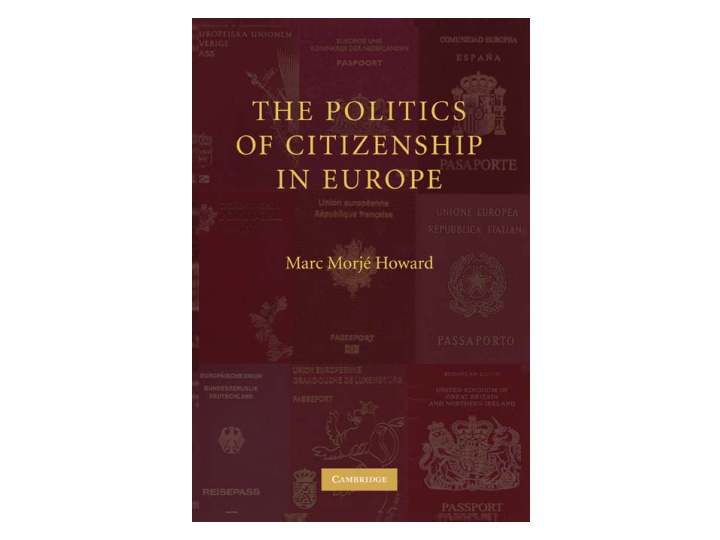



What Is Citizenship? • Legal definition • Full membership in a political community • Rights and obligations • Social closure
Why National Citizenship Matters • Elections • Welfare state benefits • Public ‐ sector employment • Social integration • Demographics • Pension Systems
Two Puzzles • #1: What Explains Historical Variation? • #2: What Explains Continuity and Change in the 11 Relatively Restrictive Countries?
An Empirical Baseline • The “new” Citizenship Policy Index (CPI) – Jus soli – Residency requirement for naturalization – Dual citizenship for immigrants • What is new about this version of the CPI? – More nuanced measures from “NATAC” – “Correction” based on “naturalization rates” – Civic integration requirements
Comparing the CPI to Koopmans et al.’s Measures
Comparing the CPI in 2008 to MIPEX 2006
Puzzle #1 • What distinguishes the historically liberal countries?
Argument #1 • Colonialism • Early Democratization
Type of Colonialism and Historical CPI
Onset of Democratization and Historical CPI
Puzzle #2 • Of the 11 historically restrictive countries, why have 6 of them liberalized their citizenship policies, while 5 have not?
Figure 1: Citizenship Policy Index, 1980s and Today Belgium United Kingdom France Ireland Sweden Portugal Finland 1980s Netherlands Today Germany Luxembourg Italy Spain Greece Denmark Austria 0 1 2 3 4 5 6
Argument #2 • The Politics of Citizenship…
Operationalization of the Argument • Electoral strength of far right parties (1992 ‐ 2006)
Far Right Strength and CPI Liberalization
Conclusions • Only part of the larger political story… • The limits of medium ‐ N analysis… • Normative problem: – Is “democracy” more “democratic”? • Policy implication: – Beware of “direct democracy”!
Varieties of Citizenship in the European Union PART I: ARGUMENT • Chapter 1 Citizenship in Cross ‐ National Perspective • Chapter 2 Historical Variation and Legacies • Chapter 3 Continuity and Change in the Contemporary Period PART II: CASES • Chapter 4 Liberalizing Change (Finland, Luxembourg, Netherlands, Portugal, and Sweden) • Chapter 5 Restrictive Continuity (Austria, Denmark, Greece, Italy, and Spain) • Chapter 6 Partial Liberalization with a Restrictive Backlash (Germany) • Chapter 7 Citizenship Battles in the Historically Liberal Countries (Belgium, France, Ireland, and the U.K.) • Chapter 8 The New European Frontier (The 12 Accession Countries)
Recommend
More recommend